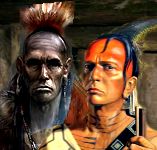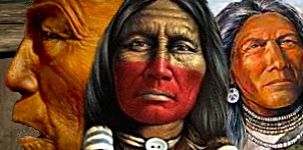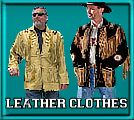 |
|
 |
|||
 |
 |
 |
 |
||
|
|
|||||
      |
Cherokee Indians
| |||||||||||||||||||||||||||||||||||||||||||||||||||||||||||||||||||||||||||||||||||||||||||||||||||||||||||||||||||||||||||||||||||||||||||||||||||||||||||||||||||||||||||||||||||
|
Artifact Replicas|Jewelry|Clothing|Figurines|Art Prints|On Sale|Closeouts Cherokee Indians IndexThe word Cherokee is believed to have evolved from a Choctaw word meaning "Cave People." Another explanation says it came from the Creek word "Chelokee" meaning "people of a different speech." It was picked up and used by Europeans as Cherokee, and eventually accepted and adopted by Cherokees in the form of Tsalagi or Jalagi. In their own language the Cherokee originally called themselves the Aniyunwiya (or Anniyaya) "principal people" or the Keetoowah (or Anikituaghi, Anikituhwagi) "people of Kituhwa." Although they usually accept being called Cherokee, many prefer Tsalagi (pronounced Jaw-law-gee’) from their own name for the Cherokee Nation (Tsalagihi Ayili). Traditionally, the people now known as Cherokee referred to themselves as aniyun-wiya, a name usually translated as "the Real People," sometimes "the Original People," or "principal people." Other names applied to the Cherokee have been: Allegheny (or Allegewi, Talligewi) (Delaware), Baniatho (Arapaho), Caáxi (or Cayaki) (Osage and Kansa), Chalaque (Spanish), Chilukki (dog people) (Choctaw and Chickasaw), Entarironnen (mountain people) (Huron), Gatohuá (Creek), Kittuwa (or Katowá) (Algonquin), Matera (or Manteran) (coming out of the ground) ( Catawba), Nation du Chien (French), Ochietarironnon (Wyandot), Oyatageronon (or Oyaudah, Uwatayoronon) (cave people) (Iroquois), Shanaki (Caddo), Shannakiak (Fox), Tcaike (Tonkawa), and Tcerokieco (Wichita). Early historical data locates the Cherokees in a vast area of what is now the southeastern United States, with about 200 towns scattered throughout the present states of Alabama, Georgia, Kentucky, North Carolina, South Carolina, Virginia, and West Virginia. The Cherokees' first interaction with Europeans was a brief encounter with Spanish explorer Hernando DeSoto in 1540. English colonial traders began to appear among the Cherokees around 1673. The Cherokee first went to war with the colonists in 1711, and were devastated by epedemics of disease, especially smallpox, during that century. The first Cherokee lands were ceded in 1775, and the Cherokees were forced to sign one treaty after another with the US government, each giving up more Cherokee lands. In 1835 the United States Congress passed the Removal Act. Principal Chief John Ross, refused to recognize the validity or the legality of the Removal Act, and challenged it in court. The U.S. Supreme Court ruled in favor of the Cherokee Nation. President Jackson is reported to have said, "Justice Marshall has made his decision. Now let him enforce it." Jackson then sent negotiators into the Cherokee Nation to secure a treaty where they would give up all of their land in the east for land out west. Since the government of the Cherokee Nation refused to negotiate, other Cherokees signed the treaty without authorization. The United States called the treaty a legal document and proceeded to force the Cherokees to live up to its terms. Jackson ordered the U.S. Army to forcibly remove the Cherokees from their homelands in 1838. People were taken out of their homes and herded like cattle into stockades to await removal. Conditions were crowded and unsanitary, and many died in these prisons. The forced march began later that same year. Approximately 20,000 Cherokees were marched west over what would soon be known as the "Trail of Tears." Along the way, approximately 4,000 people died. A few managed to escape by hiding out in the mountains. The Cherokees who had signed the removal treaty became known as the Treaty Party. John Ross' group who did not make the treaty were called the Ross Party. These two factions started a civil war that lasted until 1843. At the end of this domestic strife the Cherokees started over and rebuilt their nation. Tahlequah was established as the capital city. Then, during the Civil War, members of the former Treaty Party turned Confederate Cherokees, and Ross was forced to sign a treaty with the Confederacy. Following the Civil War, the United States used that treaty as an excuse to punish the Cherokee Nation, forcing it to sign yet another treaty and to give up more land. Certain governmental powers were also taken away from the Cherokee Nation. The Cherokee Nation, along with the Choctaw Nation, the Chickasaw Nation, the Creek Nation, and the Seminole Nation were organized into "Indian Territory." Over the next half century, the powers of the so-called Five Civilized Tribes that made up the Indian Territory were further eroded by the United States. In 1907, against the wishes of nearly all of the traditional full-blood people of all five tribes, Indian Territory was combined with Oklahoma Territory to its west to form the new state of Oklahoma. From the beginning, the United States had no intention of dealing with Indians in the new state. The tribal governments were all but abolished and likely would have been but for the complications of transferring land titles. The president of the United States began appointing chiefs for the five tribes when the government had need of a signature to make the transfers legal. Several appointments were made only long enough to obtain the desired signature and these appointees became known as "Chiefs for a day." It wasn't until 1973, that President Richard Nixon indicated that the Cherokees had the right to vote, revitalizing the Cherokee Nation. However, this created the uncomfortable situation of having two Cherokee (the other, the United Keetoowan Band of Cherokee Indians in Oklahoma, was founded in the 1950s) governments in the same location, with the same jurisdiction, and basically the same constituency. A conflict over political issues developed, with both sides claiming to be the only legal government for Cherokees in Oklahoma. Since then, the Cherokee Nation has grown and prospered, making its most impressive strides under the leadership of Principal Chief Wilma P. Mankiller. Mankiller served as principal chief from 1987 to 1995. Joe Byrd succeeded Mankiller, but allegations of corruption and abuse of power plagued his four year term. In 1999, Cherokee voters elected Chad Smith principal chief in 1999. The Cherokee Nation today operates under a new constitution ratified by Cherokee voters in 1976. The three-branch government is composed of a chief executive called the principal chief, a legislature called the Tribal Council, and a judicial branch called a tribunal made up of three tribal justices. Cherokee interaction with blacks dates back to the late 1700s and early 1800s. In an attempt to adapt to white lifestyles, many Cherokees became affluent southern plantation slave owners, and the number of black Cherokee slaves was about 1,600. Untiypically, when the Cherokee roles were taken, the US Government insisted the Cherokee include their slaves as members of the Cherokee tribe. The decendents of these slaves became known as The Freedmen in modern times. Recently, the Cherokee tribe has voted to disenroll the Freedmen from the Cherokee tribal rolls. 
Incantations of the Four Winds Art Print Hardin, Helen 22 in. x 32 in. Buy at AllPosters.com Framed Mounted |
|
|||||
| Native American Home |Back to Top |Webmasters |Alphabetical Site Map |Articles Site Map |InfoWizzard |Submissions | |||||||
Site Designed by: Mazaska Web Design
Hosted by: HostIt4You.com
© 1999-2007 AAANativeArts.com
+1132
file: cherokee indians




